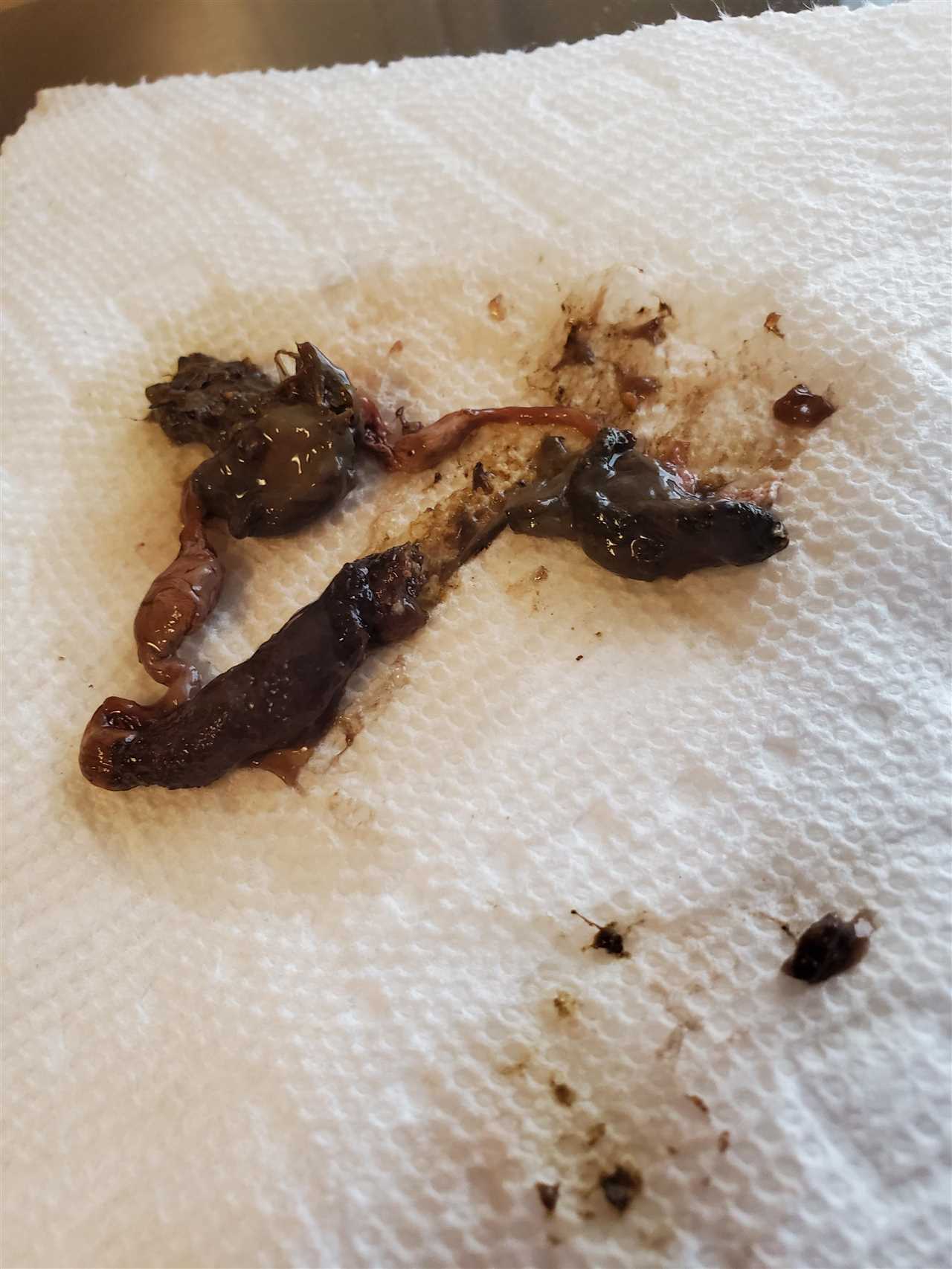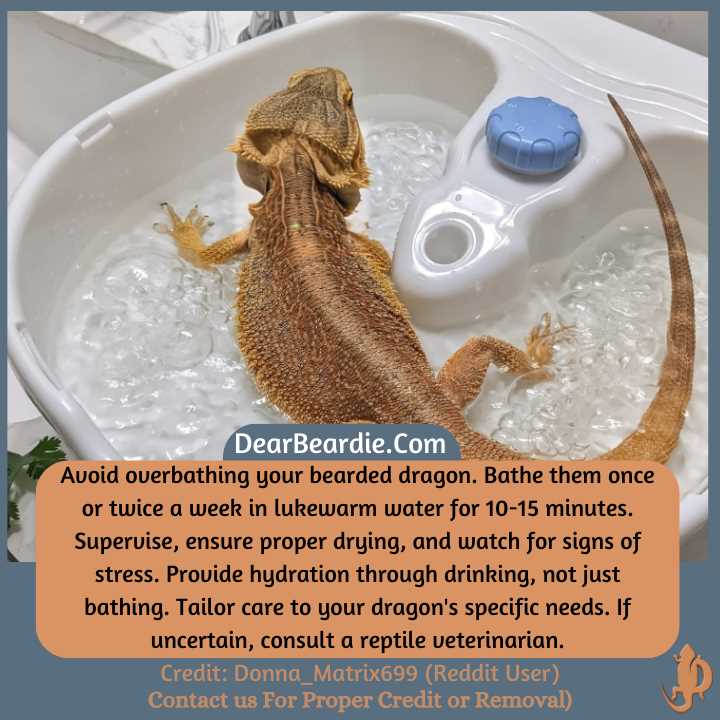
Diet plays a crucial role in the quality of bearded dragon urates. An improper diet can lead to abnormalities in urate color and consistency. Bearded dragons require a balanced diet that consists of both animal protein and fruits or vegetables. Inadequate hydration or excessive protein intake can result in concentrated urates that appear dry and chalky.
Proper hydration is essential to maintain healthy urates in bearded dragons. Ensuring that your pet has access to clean water at all times is crucial. In addition to water, bearded dragons can also obtain hydration from the food they eat. Incorporating moisture-rich fruits and vegetables into their diet can help maintain the proper hydration levels, promoting healthy urates.
The cleanliness and hygiene of the bearded dragon’s living environment also greatly impact the quality of urates. A clean terrarium is essential to prevent the buildup of waste products and bacteria, which can contribute to changes in urate consistency and color. Regularly cleaning the terrarium, removing any feces, and providing fresh substrate contribute to the overall well-being of your bearded dragon.
Monitoring and taking care of the urates of your bearded dragon is crucial for maintaining its overall health and well-being. By providing a balanced diet, ensuring proper hydration, and maintaining a clean environment, you can help prevent any potential issues with urates. Regular veterinary check-ups are also important to address any concerns and ensure that your bearded dragon is in good health.
Urates are the solid waste produced by bearded dragons. Unlike mammals, bearded dragons do not have a separate urinary and digestive system. Instead, they excrete waste in the form of urates, which are combined with their feces. This unique trait allows bearded dragons to conserve water in their arid environment.
The appearance of bearded dragon urates can vary depending on their diet and hydration levels. Healthy urates have a chalky white color and a firm, solid consistency. They should not have any odor or unusual discoloration. If the urates become watery, green, yellow, or have a foul smell, it can be a sign of a health issue.
Monitoring bearded dragon urates is important for detecting any potential health problems. Abnormal urates can be a symptom of various conditions such as dehydration, urinary tract infections, or metabolic disorders. Regularly checking their urates can help you identify any changes or abnormalities early on.
Proper diet plays a crucial role in maintaining healthy bearded dragon urates. Their diet should consist of a variety of vegetables, fruits, and insects. The balance between calcium and phosphorus is essential, as excessive phosphorus can lead to an imbalance and the formation of abnormal urates. It is recommended to provide a calcium supplement and ensure a calcium-rich diet for your bearded dragon.
Hydration also plays a key role in bearded dragon urate production. Insufficient water intake can lead to concentrated urates and potential urinary issues. Bearded dragons should have access to fresh water at all times, and regular misting of their enclosure can help maintain hydration levels.
Cleaning bearded dragon urates is an important part of their overall care routine. Any soiled substrate or enclosure should be cleaned promptly to prevent the spread of bacteria and odor. Bearded dragons are generally clean animals, and providing a clean environment contributes to their overall health and well-being.
Causes of Abnormal Urates in Bearded Dragons

Abnormal urates in bearded dragons can be a cause for concern and may indicate an underlying health issue. Urates are the solid waste products that bearded dragons excrete, and they are usually creamy white in color. However, if the urates appear differently, it may be a sign of an abnormality.
There are several factors that can contribute to the formation of abnormal urates in bearded dragons:
Diet
Dehydration
Dehydration is another common cause of abnormal urates in bearded dragons. If a bearded dragon does not have access to fresh water or is not drinking enough, it can lead to concentrated urates. It is essential to provide clean, fresh water to your bearded dragon at all times and monitor their water intake to prevent dehydration.
Poor Husbandry
It is crucial to monitor your bearded dragon’s urates regularly and observe any changes in their appearance or consistency. If you notice any abnormalities, it is recommended to consult with a veterinarian who specializes in reptiles. They can perform a thorough examination and determine the underlying cause of the abnormal urates in order to provide appropriate treatment.
Common Symptoms of Urate Problems in Bearded Dragons
What are Urates?
Common Symptoms
When a bearded dragon is experiencing urate problems, there are several symptoms that pet owners should look out for:
| Symptom | Description |
|---|---|
| Discolored Urates | If the urates are yellow, green, or brown instead of white, it could indicate an underlying health issue. |
| Watery Urates | If the urates have a watery consistency instead of being chalky, it could indicate dehydration or kidney problems. |
| Excessive Urates | If the bearded dragon is producing an unusually large amount of urates, it could indicate a problem with their diet or digestive system. |
| Difficulty Passing Urates | If the bearded dragon is struggling to pass urates or if there is blood in their waste, it could be a sign of a urinary blockage or infection. |
| Accumulation of Urates | If urates are consistently building up in the bearded dragon’s cloaca or around their vent, it could be a sign of an underlying health issue. |
Importance of Veterinary Care
If a bearded dragon is exhibiting any of these symptoms, it is crucial to seek veterinary care immediately. A qualified reptile veterinarian will be able to assess the dragon’s health and provide necessary treatment. They may recommend changes to the dragon’s diet, adjustments to the terrarium environment, or prescribe medication to address the underlying issue.
Preventing Abnormal Urates in Bearded Dragons
Proper care and diet are essential for bearded dragons to maintain healthy urates. Here are some tips to prevent abnormal urates:
2. Control Calcium Intake: Bearded dragons need adequate calcium for proper bone development. However, excessive calcium intake can lead to urate problems. Avoid over-supplementing with calcium powder and provide a balanced ratio of calcium to phosphorous in their diet.
3. Proper Hydration: Dehydration can result in concentrated urates and other health issues in bearded dragons. Ensure your lizard has access to fresh, clean water at all times. Additionally, you can mist their terrarium with water to increase humidity levels and aid in hydration.
4. Maintain a Clean Terrarium: Regularly clean the substrate and remove any feces or urates from the enclosure. Bacteria and ammonia from waste can lead to infections and urinary problems in bearded dragons.
5. Adequate UVB Lighting: Bearded dragons require UVB rays for the synthesis of vitamin D3, which aids in calcium absorption. Insufficient UVB lighting can lead to metabolic bone disease and associated urate issues. Use a UVB reptile lamp and ensure it is positioned at the correct distance from their basking spot.
6. Monitor Temperature and Humidity: Bearded dragons are ectothermic, meaning they rely on their environment to regulate their body temperature. Maintain a temperature gradient in their terrarium with a basking spot around 95°F (35°C) and a cooler area around 75°F (24°C). Additionally, monitor humidity levels to prevent dehydration.
By following these preventive measures, you can help ensure that your bearded dragon maintains proper urate health and overall well-being. Regular monitoring and providing a suitable habitat and diet will significantly decrease the likelihood of urate-related problems in your reptile companion.
Proper Diet for Bearded Dragons to Prevent Urate Issues
Diet Composition
Bearded dragons are omnivorous reptiles, which means they require a mix of both plant-based and animal-based food sources. The diet should be composed of approximately 70-80% plant matter and 20-30% animal matter.
Plant-based food sources for bearded dragons include leafy greens, such as kale, collard greens, and mustard greens. These greens should be offered daily and make up the majority of their plant-based diet. Other vegetables, such as bell peppers, carrots, and squash, can also be included in their diet, but in smaller quantities.
Animal-based food sources for bearded dragons include insects, such as crickets, mealworms, and dubia roaches. These insects should be gut-loaded (fed a nutritious diet) before offering them to your pet. Bearded dragons can also be fed small amounts of lean protein, such as cooked chicken or turkey, as an occasional treat.
Dietary Considerations
It is also essential to provide proper supplementation to ensure your bearded dragon receives all necessary vitamins and minerals. Calcium and vitamin D3 are particularly important for proper bone growth and health. Dusting food items with a reptile-specific calcium supplement should be done regularly, as well as occasional supplementation with vitamin D3.
Feeding Schedule
Create a feeding schedule for your bearded dragon to establish a routine. Younger dragons may require daily feedings, while adults can be fed every 2-3 days. The amount of food offered should be appropriate for the size and age of your dragon.
By providing a balanced diet and a suitable environment, you can help prevent urate issues in your bearded dragon and ensure they live a happy and healthy life.
Hydration and Urine Production in Bearded Dragons
Bearded dragons primarily obtain water through their diet. It is essential to provide them with a balanced and nutritious diet to ensure proper hydration. Their diet should consist of a variety of fruits, vegetables, and insects. These food items not only provide the necessary nutrients but also contribute to their water intake.
Another way to ensure hydration is through a process called “soaking.” Soaking involves placing your bearded dragon in a shallow container with warm water for a specific period. This helps them absorb water through their skin and replenishes their hydration levels. Soaking is especially important during shedding periods, as it helps to hydrate their skin and facilitate the shedding process.
In addition to providing enough water, it is crucial to monitor your bearded dragon’s urine production. Normal bearded dragon urates should be white and pasty or chalky in consistency. If you notice any changes in color or consistency, it may indicate an underlying health issue. Abnormal urates can be a sign of dehydration, kidney problems, or other metabolic disorders.
| Signs of Dehydration | Causes | Prevention |
|---|---|---|
| Dark yellow or orange urates | Inadequate water intake | Ensure a clean and accessible water source at all times |
| Dry and wrinkled skin | Insufficient humidity in the terrarium | Use a hygrometer to monitor humidity levels and provide regular misting |
| Loss of appetite | Illness or stress | Provide a suitable environment with appropriate temperature and minimize stressors |
Regular observation and care are necessary to ensure that your bearded dragon remains hydrated and its urine production remains normal. Consult with a veterinarian experienced in reptile care if you notice any persistent changes or abnormalities in your bearded dragon’s urates.
Spotting and Cleaning Bearded Dragon Urates
When to Seek Veterinary Care for Bearded Dragon Urate Problems
If your bearded dragon’s urates consistently have a different color, consistency, or smell, it could be a sign of dehydration or a urinary tract infection. These conditions can be serious and may require medical intervention.
It is also essential to seek veterinary care if your bearded dragon is experiencing a prolonged period without urates or is straining during urination. These could be indications of a blockage in the urinary system, which can be life-threatening if left untreated.
When you visit the vet, be prepared to provide information about your bearded dragon’s diet, habitat, and any recent changes in their environment. The vet may perform a physical examination, as well as take a urine sample for analysis.
Conclusion

Monitoring your bearded dragon’s urates and knowing when to seek veterinary care is crucial for their well-being. By keeping a close eye on their urine and being aware of any abnormalities, you can help catch and address potential health issues early on.
Remember to provide a proper diet, maintain a clean and appropriate terrarium, and ensure your reptile friend stays hydrated. These proactive measures can greatly reduce the chances of your bearded dragon developing urate problems.

I’m Lena Adams—a product of an unconventional upbringing in the African wilderness. My father, a daring explorer of African wildlife, sparked my fascination with reptiles, a passion that intertwined with the tragic loss of my mother during an expedition, leaving an indelible mark on my life. Driven to understand the creatures that captivated my parents, I embarked on my journey, sharing insights about reptiles, frogs, and lizards on my website. Through my explorations and conservation efforts, I honour my family’s legacy while seeking connections—to the creatures, nature, and the mother whose presence I yearn to understand.
